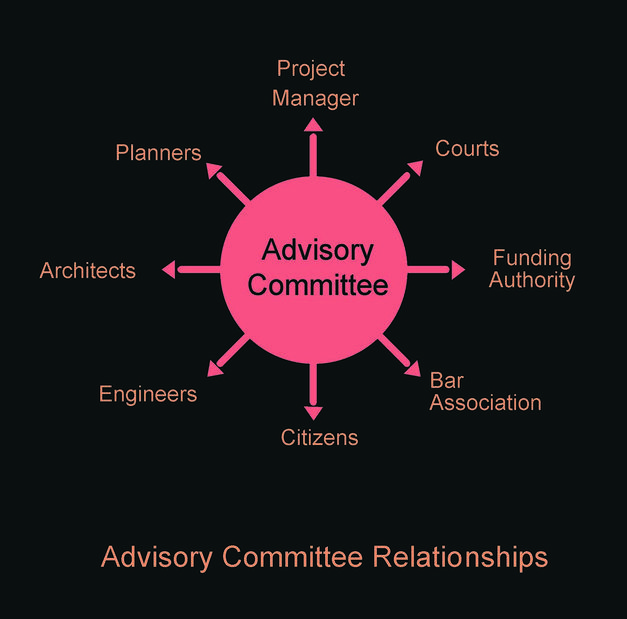A review and advisory committee is critical to the long-term success of planning, design, and construction efforts and should be formed early in the planning process. This committee should meet at regular, frequent intervals, particularly during the planning and early design stages of a project. The most successful committees include representatives from the major components of the justice system as well as the local funding authority. Bar representatives and other general, or special interest, groups are frequently included, either in a voting or a nonvoting capacity.
The committee may or may not be given formal approval powers; it may, for instance, act only as an advisory panel for the funding authority. Alternatively, the committee may be empowered to act as the formal approval body for the jurisdiction. In any case, it is very important that the committee contain policy makers: elected officials, chief judges, chief prosecuting attorneys, and so on. Alternates (staff members) may also attend, or may be appointed to a subcommittee, but the committee of policy makers should be the ongoing source of policy-directed decision making and consensus building.
Without a diverse and representative group of policy makers on a formal review and advisory committee, effective coordinated action becomes extremely difficult. Planning, design, and construction projects take several years to complete. Because circumstances change, and staff members and elected officials change jobs or leave office during such projects, continuity can be achieved through the public review and advisory committee.
 |
